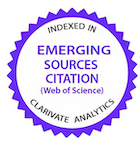Dieta prática com substituição total da farinha de peixe por farelo de soja para tilápia-do-nilo: desempenho de crescimento e efeitos na saúde
DOI:
https://doi.org/10.1590/1809-6891v22e-71567EResumo
O objetivo deste estudo foi avaliar o desempenho de crescimento e saúde em juvenis de tilápia-do-nilo (Oreochromis niloticus) alimentados com dieta prática com substituição total da farinha de peixe (FP) por farelo de soja (FS), bem como o efeito na sobrevivência, após desafio patogênico com Aeromonas hydrophila. Duzentos juvenis de tilápia-do-nilo foram alojados em 8 tanques (800 L). O experimento consistiu de dois tratamentos: dieta comercial formulada com FP (controle) e dieta prática com substituição total do FP pelo FS. Foram mensuradas as variáveis de qualidade da água, parâmetros zootécnicos e hematológicos. Além disso, ao final do experimento, os peixes foram submetidos a um desafio com A. hydrophila. Maior custo por kg de peixe foi obtido no tratamento controle (com FP). A retenção de N foi maior nos peixes alimentados com dieta sem FP, enquanto os parâmetros hematológicos, imunológicos e a sobrevivência após o desafio experimental não diferiram entre os tratamentos. É possível reduzir os custos dietéticos substituindo a FP pelo FS sem afetar o desempenho do crescimento e a saúde do animal, além de beneficiar o meio ambiente ao reduzir a excreção de N na água.
Palavras-chave: proteína vegetal; Aeromonas hydrophila; retenção de nitrogênio; imunologia.
Downloads
Referências
FAO - Food Agriculture Organization of the United Nations. The State of World Fisheries and Aquaculture. Rome: 2020. Available from: <https://doi.org/10.4060/ca9229en>. Accessed: aug. 08, 2020.
Peixe-BR. Anuário Brasileiro da Piscicultura Peixes BR 2022. Associação Brasileira da Piscicultura, 79p. 2022. Available from < https://www.peixebr.com.br/anuario-2021/ >
ENGLISH, W.R, SCHWEDLER TE, DYCK LA. Aphanizomenon flos-quae, a toxic blue green alga in commercial channel catfish, Ictalurus punctatus, ponds: a case history. Journal of Applied Aquaculture. 1994;3(1-2):195-209. Available from: https://doi.org/10.1300/J028v03n01_14.
PINTO LGQ. Exigências dietárias e disponibilidade de fontes de fósforo para tilápia do Nilo (Oreochromis niloticus). Universidade Estadual Paulista. 2008. Available from: http://hdl.handle.net/11449/104062
FURUYA WM, PEZZATO LE, PEZZATO AC, BARROS MM, MIRANDA ECD. Coeficientes de digestibilidade e valores de aminoácidos digestíveis de alguns ingredientes para tilápia do Nilo (Oreochromis niloticus). Revista Brasileira de Zootecnia. 2001 July;30(4):1143-1149. Available from: https://doi.org/10.1590/S1516-35982001000500002.
JANDA JM, ABBOTT SL. The genus Aeromonas: taxonomy, pathogenicity, and infection. Clinical microbiology reviews. 2010 Jan;23(1):35-73. Available from: https:// cmr.asm.org/content/23/1/35.short.
NRC - NATIONAL RESEARCH COUNCIL. Nutrient requirements of fish and shrimp. Washington, DC: National academies press, 2011. 392p.
DE NOVAES AF, PEREIRA GT, MARTINS MIEG. Indicadores zootécnicos e econômicos da tilapicultura em tanques-rede de diferentes dimensões. Boletim do Instituto de Pesca. 2018 Nov;38(4):379-387. Available from: https://www.pesca.sp.gov.br/boletim/index.php/bip/article/view/972.
OLSEN RL, HASAN MR. A limited supply of fishmeal: Impact on future increases in global aquaculture production. Trends in Food Science & Technology. 2012;27(2):120-128. Available from: https://doi.org/10.1016/j.tifs.2012.06.003.
SCHLEDER DD, JATOBÁ A, SILVA BCD, FERRO DPD, SEIFFERT WQ, VIEIRA FDN. Soybean protein concentrate in Pacific white shrimp reared in bioflocs: effect on health and vibrio challenge. Acta Scientiarum. Animal Sciences. 2018;40, e42570. Available from: https://doi.org/10.4025/actascianimsci.v40i1.42570.
JATOBÁ A, VIEIRA FDN, SILVA BCD, SOARES M, MOURIÑO JLP, SEIFFERT, WQ. Replacement of fishmeal for soy protein concentrate in diets for juvenile Litopenaeus vannamei in biofloc-based rearing system. Revista Brasileira de Zootecnia. 2017 July;46(9):705-713. Available from: https://doi.org/10.1590/s1806-92902017000900001.
AOAC - Association Official Analytical Chemist. Official Methods of Analysis. 18th ed. Gaitherburg: MD AOAC International; 2005.
DA SILVA BC, JATOBÁ A, SCHLEDER DD, VIEIRA FDN, MOURIÑO JLP, SEIFFERT WQ. Dietary supplementation with butyrate and polyhydroxybutyrate on the performance of pacific white shrimp in biofloc systems. Journal of the World Aquaculture Society. 2016 May;47(4):508-518. Available from: https://doi.org/10.1111/jwas.12284.
ROSENFELD G. Corante pancrômico para hematologia e citologia clínica. Nova combinação dos componentes do May-Grünwald e do Giemsa num só corante de emprego rápido. Memórias do Instituto Butantan: v. 20; 1947. p. 329-334.
AMAR, Edgar C. et al. Effects of dietary βcarotene on the immune response of rainbow trout Oncorhynchus mykiss. Fisheries Science: v. 66 (6); 2000. p 1068-1075.
BELGHIT I, SKIBA-CASSY S, GEURDEN I, DIAS K, SURGET A, KAUSHIK S, PANSERAT S, SEILIEZ I. Dietary methionine availability affects the main factors involved in muscle protein turnover in rainbow trout (Oncorhynchus mykiss). British Journal of Nutrition. 2014 May;112(4):493–503. Available from: https://doi.org/10.1 017/S0007114514001226.
GARCIA-ORGANISTA AA, MATA-SOTRES, JA, VIANA MT, ROMBENSO AN. The effects of high dietary methionine and taurine are not equal in terms of growth and lipid metabolism of juvenile California Yellowtail (Seriola dorsalis). Aquaculture. 2019 Oct;512: 1-10. Available from: https://doi.org/10.1016/j.aquaculture.2019.734304.
LALL SP, DUMAS A. Nutritional requirements of cultured fish: Formulating nutritionally adequate feeds. In: Feed and feeding practices in aquaculture. Woodhead publishing: 2015. p. 53-109.
DO ESPIRITO SANTO NG, FERNANDES VAG, DA SILVA B. Replacement of animal protein sources by soy protein concentrate for juvenile Nile tilapia. Boletim do Instituto de Pesca. 2015 Sept;41:707-717. Available from: https://pesquisa.bvsalud.org/portal/resource/pt/vti-13655.
SILVA NETO MR. Substituição da farinha de peixes pelo concentrado proteico de soja para alevinos de tilápia do Nilo. Universidade Federal da Paraiba. 2017. Available from: https://repositorio.ufpb.br/jspui/handle/123456789/15977.
ENCARNAÇÃO P, DE LANGE C, BUREAU DP. Diet energy source affects lysine utilization for protein deposition in raibow trout (Oncorhynchus mykiss). Aquaculture. 2006 Dec;261(4):1371–1381, Available from: https://doi.org/10.1016/j.aquaculture.2006.08.001.
KOCH JF, RAWLES SD, WEBSTER CD, CUMMINS V, KOBAYASHI Y, THOMPSON KR, GANNAMD AL, TWIBELLD RG, HYDE NM. Optimizing fish meal-free commercial diets for Nile tilapia, Oreochromis niloticus. Aquaculture. 2016 Feb;452:357-366. Available from: https://doi.org/10.1016/j.aquaculture.2015.11.017.
MONTANHINI NETO R, OSTRENSKY A. Evaluation of commercial feeds intended for the Brazilian production of Nile tilapia (Oreochromis niloticus L.): nutritional and environmental implications. Aquaculture Nutrition. 2015 Sept;21(3):311-320. Available from: https://doi.org/10.1111/anu.12154.
KIRON, V. Fish imune system and it nutritional modulation for preventive health care. Animal Feed Science and Technology. 2012 Apr;173(1-2):111-133. Available from: https://doi.org/10.1016/j.anifeedsci.2011.12.015.
SIGNOR FRP, SIGNOR AA, FEIDEN A, NEU DH, NERVIS JAL, BOSCOLO WR. Organic Soybean Meal in Diet for Nile Tilapia. Agrarian. 2018;11(42):352-362. Available from: https://doi.org/10.30612/agrarian.v11i42.6983.
DALLAGNOL, J. M. Apparent digestibility of diets the basis of derivatives of soybean (Glycine max), hematological and performance of juvenile Nile Tilapia (Oreochromis niloticus). Universidade Estadual do Oeste do Paraná. 2010. Available from: http://tede.unioeste.br/handle/tede/1970
MARTINS GP, PEZZATO LE, GUIMARAES IG, PADOVANI CR, MAZINI BSM, BARROS MM. Fatores antinutricionais da soja crua no crescimento e respostas hematológicas da tilápia do nilo. Boletim do Instituto de Pesca. 2017 Sept;43(3):322-333. Available from: https://doi.org/10.20950/1678-2305.2017v43n3p322.
JATOBÁ A, DA SILVA BC, DA SILVA JS, DO NASCIMENTO VIEIRA, F, MOURIÑO, JLP, SEIFFERT WQ, TOLEDO TM. Protein levels for Litopenaeus vannamei in semi-intensive and biofloc systems. Aquaculture. 2014 Aug;432:365-371. Available from: https://doi.org/10.1016/j.aquaculture.2014.05.005.
ZHAO Z, Song CY, Xie J, Ge XP, Liu B, Xia SL, Yang S, Wang Q, Zhu SH. Effects of fish meal replacement by soybean peptide on growth performance, digestive enzyme activities, and immune responses of yellow catfish Pelteobagrus fulvidraco. Fisheries science. 2016 Jun;82(4):665-673. Available from: https://doi.org /10.1007/s12562-016-0996-6.
AMER SA, AHMED SA, IBRAHIM RE, AL-GABRI NA, OSMAN A, SITOHY M. Impact of partial substitution of fish meal by methylated soy protein isolates on the nutritional, immunological, and health aspects of Nile tilapia, Oreochromis niloticus fingerlings. Aquaculture. 2020 Mar;518: 1-10 Available from: https://doi.org/10.1016/j.aquaculture.2019.734871.
Downloads
Publicado
Como Citar
Edição
Seção
Licença
Copyright (c) 2022 Ciência Animal Brasileira

Este trabalho está licenciado sob uma licença Creative Commons Attribution 4.0 International License.
Autores que publicam nesta revista concordam com os seguintes termos:
- Autores mantém os direitos autorais e concedem à revista o direito de primeira publicação, com o trabalho simultaneamente licenciado sob a Licença Creative Commons Attribution que permite o compartilhamento do trabalho com reconhecimento da autoria e publicação inicial nesta revista.
- Autores têm autorização para assumir contratos adicionais separadamente, para distribuição não-exclusiva da versão do trabalho publicada nesta revista (ex.: publicar em repositório institucional ou como capítulo de livro), com reconhecimento de autoria e publicação inicial nesta revista.
- Autores têm permissão e são estimulados a publicar e distribuir seu trabalho online (ex.: em repositórios institucionais ou na sua página pessoal) a qualquer ponto antes ou durante o processo editorial, já que isso pode gerar alterações produtivas, bem como aumentar o impacto e a citação do trabalho publicado (Veja O Efeito do Acesso Livre).






























